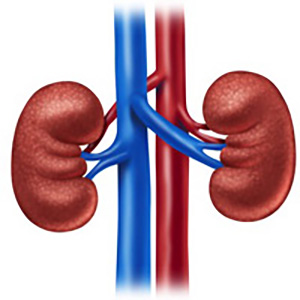 Smart Citations
Smart CitationsSee how this article has been cited at scite.ai
scite shows how a scientific paper has been cited by providing the context of the citation, a classification describing whether it supports, mentions, or contrasts the cited claim, and a label indicating in which section the citation was made.
Supine mini percutaneous nephrolithotomy in horseshoe kidney
Objective: The percutaneous nephrolithotomy (PCNL) in Horseshoe kidneys (HSK) is usually performed in the prone position, allowing entry through the upper pole and providing good access to the collecting system. However, in patients with normal kidney anatomy, the supine position is reliable and safe in most cases, but it is unknown whether the supine position is adequate in patients with HSK. The purpose of this study was to describe the results of PCNL in HSK in three different surgical institutions and to evaluate the impact of supine position during surgery, comparing pre-operative and post-operative data, complications, and stone status after surgery. Material and Methods: Between 2017 and 2022, a total of 10 patients underwent percutaneous renal surgery for stone disease in HSK. All patients were evaluated pre- and post- operatively with non-contrast CT. we evaluated patients (age and gender), stones characteristics (size, number, side, site and density ), and outcomes. The change in haemoglobin, hematocrit, creatinine and eGFr were assessed between the most recent preoperative period and the first postoperative day. Procedure success was defined as stone-free or presence of ≤4 mm fragments (Clinically Insignificant residual Fragments – CIrF). Complications were registered and classified according to Clavien-dindo Grading System, during the 30 - day postoperative period and Clavien scores ≥ 3 were considered as major complications. Statistical analysis was performed using “r 4.2.1” software, with a 5% significance level. we also compared pre-operative and post-operative data using “wilcoxon signedrank test”. Results: No statistical difference was observed between preoperative and post-operative renal function data. At one post operative day CT scan, an overall success rate of 100% was registered. 9/10 patients were completely free from urolithiasis (stone-free rate: 90%), while 1/10 patients had ≤4 mm residual stone fragments (CIrF rate: 10%). No cases of intraoperative complications were registered. Post-operative complications were reported in 1/10 patients. A patient developed urosepsis (defined as SIrS with clinical signs of bacterial infections involving urogenital organs - Clavien-dindo Grade II) after procedure, and was treated with intravenous antibiotic therapy successfully. Conclusions: This study shows that in patients with HSK mini- PCNL in supine position allows to achieve good stone free rate with a very low morbidity. According to our series, the described technique for PCNL in HSK should be an option. Nevertheless these results must be confirmed by further studies.
Downloads
How to Cite

This work is licensed under a Creative Commons Attribution-NonCommercial 4.0 International License.
PAGEPress has chosen to apply the Creative Commons Attribution NonCommercial 4.0 International License (CC BY-NC 4.0) to all manuscripts to be published.

 https://doi.org/10.4081/aiua.2023.11605
https://doi.org/10.4081/aiua.2023.11605





